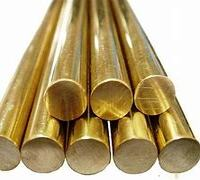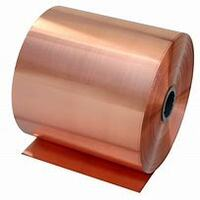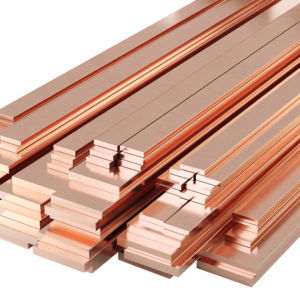1. Introduction
In the past 48 hours, global copper markets have seen increased volatility due to supply chain disruptions in Chile—the world’s largest copper producer—triggering a 3.2% spike in LME copper prices. This surge directly impacts copper rod price and related products like copper bonded earthing rods and copper strip rolls, making it more critical than ever to understand what you’re buying and why.

Whether you’re grounding an electrical system, brazing copper pipework, or sourcing materials for scrap recycling, not all ‘copper rods‘ are created equal. From pure copper round bar to copper clad steel earth rod hybrids, each type serves distinct purposes with unique trade-offs in cost, conductivity, and durability.
2. Understanding Copper Rod Variants
2.1 Solid Copper Rod vs. Copper-Bonded and Copper-Clad Alternatives
A true copper rod—often called rod copper or copper round bar—is made from high-conductivity electrolytic tough pitch (ETP) copper. It’s ideal for electrical bus bars, welding, and precision machining. However, its high copper content makes it expensive, especially as copper ingot prices climb.
In contrast, copper bonded earthing rod and copper clad ground rod options use a steel core coated with copper. The copper bonded steel variant features a molecular bond between copper and steel, offering excellent corrosion resistance at a fraction of the cost of solid copper. Similarly, copper clad steel ground rod and copper clad earth rod types provide strong tensile strength with decent conductivity—perfect for grounding where full copper isn’t necessary.
- Solid copper rod: Highest conductivity, best for welding and electrical conduction
- Copper bonded ground rod: Durable, cost-effective for earthing
- Copper clad steel earth rod: Good balance of strength and conductivity
2.2 Earthing Applications: Which Rod Is Best?
When installing an earthing system, choosing between earthing rod copper and copper bonded alternatives depends on soil conditions and budget. Pure copper earth rods last decades in corrosive soils but come with a steep earthing rod price tag. Copper bonded earthing rods offer 90% of the performance at half the cost, making them popular for residential and commercial projects.
For large-scale infrastructure, engineers often specify copper earth strip 25x3mm alongside rods for low-resistance grounding grids. These flat copper strips integrate seamlessly with copper strip for earthing systems and are priced competitively per meter.

3. Copper Rods in Joining and Fabrication
3.1 Welding and Brazing: Not All Rods Are Equal
Confusion often arises between copper welding rod and copper brazing rod. A copper to copper welding rod is used in true fusion welding (rare for copper due to high thermal conductivity), while copper to copper brazing rods—typically phosphorus-copper alloys—are far more common for joining copper pipework in HVAC and plumbing.
For air conditioning copper pipe repairs, technicians rely on copper rod for welding or brazing to ensure leak-free joints. Copper pipe soldering remains the standard for smaller diameters like 15mm copper pipe or 22mm copper tube, but larger lines often require brazing with specialized copper brazing rod formulations.
3.2 Compatibility Matters
Using the wrong rod can lead to weak joints or corrosion. For example, nickel plated copper strip or beryllium copper strip shouldn’t be joined with standard copper welding rod without proper filler compatibility checks. Always match the rod alloy to the base metal—especially when working with copper alloy strip or flexible copper bus bar assemblies.
4. Beyond Rods: Strips, Tubes, and Scrap Considerations
4.1 Copper Strip Variants and Uses
While copper rod dominates structural and grounding roles, copper strip (sometimes misspelled as copper stip or copper stripes) serves niche functions. Thin copper strips like 1mm copper strip are used in electronics, whereas copper roof strip prevents algae growth (yes, even ‘copper tape for snails’ is a real gardening hack!).

For recyclers, questions like ‘best way to strip copper wire’ or ‘fast way to strip copper cable’ are common. Avoid burning copper wire for scrap—it’s illegal in many areas and releases toxic fumes. Instead, use mechanical strippers or industrial machines for stripping wire for recycling safely.
4.2 Copper Tubing in HVAC and Plumbing
Aircon copper pipe and ac copper pipe price fluctuations mirror those of copper rod due to shared raw material costs. When bending copper pipe for tight AC installations, annealed soft temper tubes (like 3/4 copper tubing) are preferred. Always clean copper pipe before soldering to ensure strong, reliable joints.
5. Pricing Trends and Where to Buy
With copper rod price hovering near $9,200/ton on the LME, buyers seek alternatives. Copper bonded options offer savings, while copper bars for sale in bulk may include flexible copper bar or cu bars for industrial use. For small projects, searching ‘copper strip near me’ or ‘roll of copper strip’ yields local suppliers with competitive copper strip price quotes.
Scrap dealers also influence demand—stripping copper wire for scrap remains profitable if done correctly, but always compare local rates before investing time in stripping cable for copper.
6. Conclusion
Choosing the right copper rod—or its bonded, clad, or strip counterpart—depends on your application’s electrical, mechanical, and budgetary demands. Whether you need a ground rod copper for lightning protection, a copper to copper brazing rod for HVAC work, or flat copper strip for custom busbars, understanding material differences ensures performance and value. As copper markets fluctuate, informed decisions matter more than ever.
Our Website founded on October 17, 2012, is a high-tech enterprise committed to the research and development, production, processing, sales and technical services of ceramic relative materials such as Choose. Our products includes but not limited to Boron Carbide Ceramic Products, Boron Nitride Ceramic Products, Silicon Carbide Ceramic Products, Silicon Nitride Ceramic Products, Zirconium Dioxide Ceramic Products, etc. If you are interested, please feel free to contact us.

